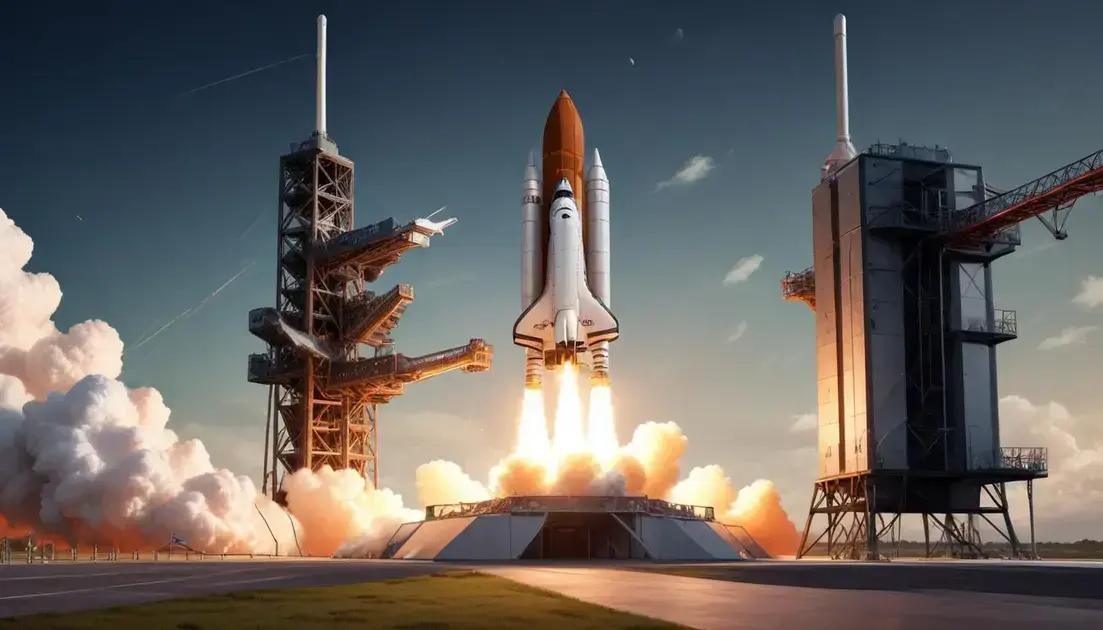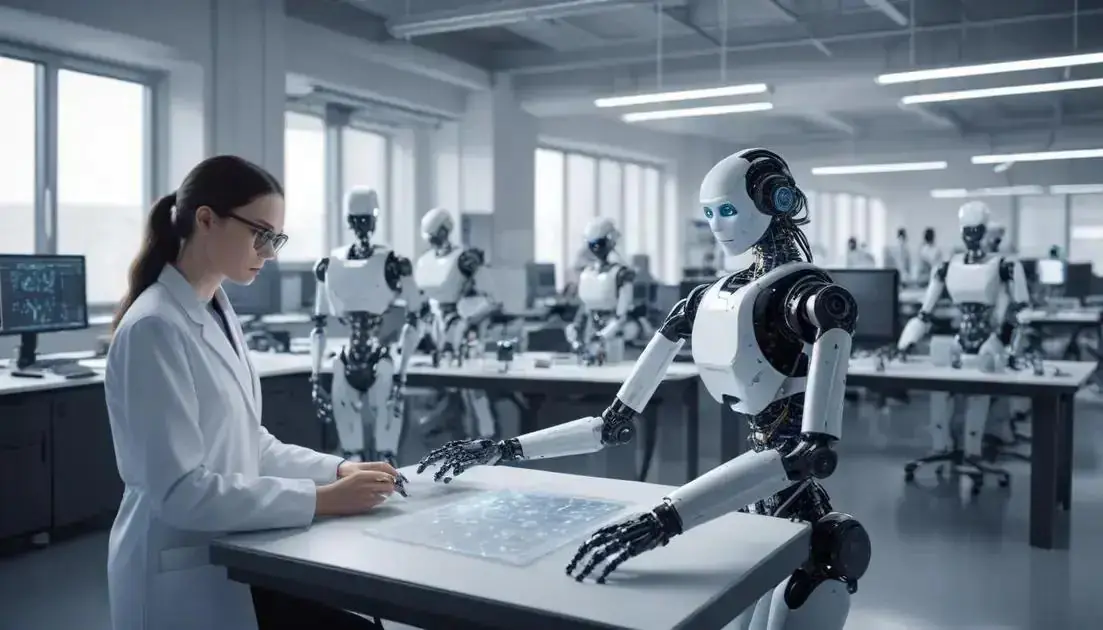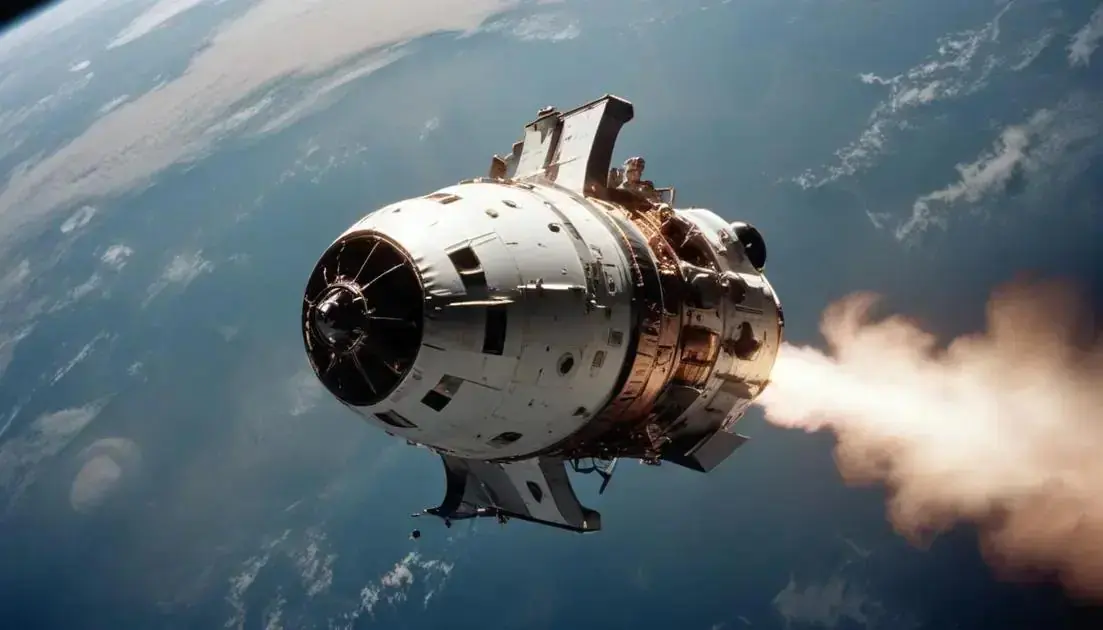
NASA: America’s Response to Soviet Space Supremacy
NASA has significantly influenced science and technology through its numerous innovations. Key advancements include improved rocket technology, medical imaging systems, and environmental monitoring methods. NASA’s work not only supports space exploration but also inspires future generations in STEM fields. Their contributions pave the way for new technologies that benefit everyday life, highlighting the lasting impact of NASA’s missions on both global science and various industries.
NASA transformed the landscape of space exploration, igniting a new era of scientific discovery and technological prowess. How did this agency change the world we live in? Let’s dive in!
Introduction to NASA’s formation
NASA was established in response to the Soviet Union’s success in space. This time was known as the Space Race, which got everyone excited about space exploration. The goal was clear: the United States wanted to prove its strength in science and technology.
Why NASA Was Created
In 1957, when the Soviets launched Sputnik, the first artificial satellite, it shocked many Americans. People realized that the U.S. needed a strong presence in space. NASA, or the National Aeronautics and Space Administration, was formed in 1958 to lead this effort.
Early Days of NASA
In its early days, NASA focused on research and development. It wanted to learn everything about space. They worked on rockets, satellites, and manned space missions. NASA’s early projects laid the foundation for future successes.
The Impact of NASA
NASA’s creation brought on a wave of enthusiasm and investment in science education. Schools began to celebrate science and math. Young students dreamed of becoming astronauts and scientists. This increased interest led to many breakthroughs in technology and knowledge.
Today, NASA continues to inspire with missions to the Moon, Mars, and beyond. The agency has changed our understanding of the universe and our place in it. With each mission, NASA pushes the boundaries of what is possible.
The Space Race dynamics
The Space Race was a thrilling period of competition between the U.S. and the Soviet Union. It began in the late 1950s and lasted for about two decades. Both countries aimed to prove their superiority in space technology and exploration.
Key Events of the Space Race
One major event was the launch of Sputnik by the Soviets in 1957. This satellite was the first object placed in orbit around Earth. It shocked people in the United States and showed that the Soviets were ahead in space technology.
America’s Response
In response to Sputnik, the U.S. ramped up its efforts in space. NASA was created to lead this charge. They pledged to send humans into space, which kicked off a flurry of projects and investments.
Focused Competition
Both nations competed fiercely to achieve milestones. The Soviets sent the first human, Yuri Gagarin, into space in 1961. It was a groundbreaking achievement that placed more pressure on the U.S. to perform.
The U.S. responded with Project Mercury and, later, Project Gemini. Each project helped astronauts learn how to operate in space. They conducted test flights, learned about weightlessness, and practiced docking maneuvers.
The Moon Landing
The climax of the Space Race was the Apollo 11 mission. In 1969, Americans landed on the Moon. Neil Armstrong’s famous words still resonate: “That’s one small step for man, one giant leap for mankind.” This moment marked a significant victory for the U.S. and changed space exploration forever.
Key missions and achievements
NASA has completed many key missions that changed space exploration. Each mission played a big role in advancing science and technology. Let’s look at some of the most important ones.
Project Mercury
Project Mercury was NASA’s first manned space program. It started in 1958. The goal was to send humans into orbit and bring them back safely. In 1961, astronaut Alan Shepard became the first American in space. This mission marked a major step forward for NASA.
Gemini Program
The Gemini program followed Mercury and took place between 1962 and 1966. It aimed to develop skills needed for long-duration flights. Astronauts practiced spacewalks and docking with other spacecraft. These skills were crucial for future missions, including the Moon landing.
Apollo Missions
The Apollo program is perhaps NASA’s most famous initiative. It aimed to land humans on the Moon. Apollo 11, in 1969, was a historic success. Neil Armstrong and Buzz Aldrin walked on the lunar surface, making history together.
Apollo 13 even showed NASA’s problem-solving skills. After an oxygen tank exploded, the team worked hard to bring the crew home safely. This mission proved that teamwork and quick thinking can save lives.
Space Shuttle Program
The Space Shuttle program started in 1981 and lasted for 30 years. It was unique because it could launch like a rocket and land like a plane. The Shuttle delivered astronauts and equipment to orbiting space stations. It helped build the International Space Station (ISS), a symbol of global cooperation in space.
Recent Achievements
More recently, NASA’s Mars missions have captured the public’s imagination. Rovers like Curiosity and Perseverance have provided valuable insights about the Red Planet. They search for signs of past life and collect data about Mars’ climate.
Technological advancements
Technological advancements have been a key part of NASA’s journey. From the beginning, the agency focused on improving aerospace technology. These advancements helped make space exploration safer and more effective.
Rocket Technology
One of the biggest breakthroughs was in rocket technology. Early rockets, like the V-2, paved the way for the powerful Saturn V. This rocket took astronauts to the Moon during the Apollo missions. It remains one of the most powerful rockets ever built.
Computing Power
Computers also played a vital role in space missions. NASA’s early computers were large and slow. However, they laid the groundwork for today’s advanced systems. Now, computers are smaller, faster, and more reliable. They help manage spacecraft systems and monitor astronauts’ health.
Satellite Technology
Another key advancement is satellite technology. Satellites provide critical data for weather forecasting, communication, and global positioning. NASA’s satellite programs have improved our understanding of Earth’s climate and helped predict natural disasters.
Materials Science
NASA has also led innovations in materials science. Developing lightweight materials helps spacecraft withstand harsh space environments. Options like carbon fiber and heat-resistant tiles protect spacecraft from extreme temperatures.
Robotics and AI
Robotics and artificial intelligence (AI) have significantly changed space missions. Rovers like Curiosity and Perseverance use advanced robotics. These machines can explore Mars, collect samples, and send information back to Earth without human help.
In summary, technological advancements have been crucial for NASA. They not only enhance missions but also benefit life on Earth. Many technologies developed for space have found their way into everyday use, improving our lives.
Impact on global science and industry
NASA’s work has a huge impact on global science and industry. Their discoveries and technologies have influenced many fields. Let’s explore some key areas where NASA’s impact is clear.
Driving Innovation
Nasa’s research often leads to new technologies. For example, the development of advanced materials has trickled down into industries like aviation and medicine. These innovations not only enhance safety but also boost efficiency.
Space Exploration
NASA’s space missions have expanded our understanding of the universe. The data they collect helps scientists learn about Earth, other planets, and even the origins of life. This knowledge influences various scientific fields, including astronomy and geology.
Environmental Monitoring
NASA’s satellites play a crucial role in monitoring Earth’s climate. They track weather patterns, deforestation, and natural disasters. This information helps governments and organizations respond effectively to environmental changes.
Inspiring Education
Nasa’s missions inspire students to explore science and engineering. Programs like “NASA Space Grant” encourage young minds to pursue careers in STEM fields. By promoting science education, NASA helps create the next generation of innovators.
Commercial Space Industry
Nasa has also fueled the commercial space industry. By partnering with private companies, they enable new opportunities for space travel and research. This collaboration leads to cost-effective solutions and makes space more accessible.
Health and Technology Benefits
Technologies developed for space exploration often find applications in healthcare. For instance, imaging technology used in satellites can improve diagnostic equipment. Similarly, materials developed for space suits are now used in everyday safety gear.
In summary, NASA’s impact on global science and industry is vast. Their advancements touch numerous lives and continue to shape a better future.
The legacy of NASA’s innovations
The legacy of NASA’s innovations is vast and impactful. Many technologies created for space travel have changed everyday life. Let’s look at some key contributions that highlight this legacy.
Improving Technology
Nasa has developed cutting-edge technologies that benefit various industries. From advanced materials to the technology used in smartphones, their work has made significant impacts.
Health and Medicine
Medical technology has greatly benefited from NASA’s research. For example, NASA developed imaging sensors that improve medical imaging. These tools help doctors better diagnose patients and improve their care.
Environmental Monitoring
Nasa’s satellites monitor Earth’s climate and weather patterns. These data help scientists understand climate change and predict severe weather. This information is crucial for protecting lives and property around the world.
Everyday Products
Nasa innovations have also led to everyday products. Memory foam, used in mattresses and cushions, was originally developed for space missions. This material improves comfort and sleep quality for many people.
Educational Inspiration
Nasa inspires countless students to pursue careers in STEM. Programs introduce young minds to science and technology. This encouragement leads to a stronger future workforce equipped to tackle global challenges.
Long-term Space Exploration
The ongoing legacy is evident in the push for long-term space exploration. Nasa’s work on the Artemis program aims to return humans to the Moon and eventually reach Mars. This mission will ignite further interest in space exploration and innovation.
In summary, NASA’s legacy lives on through its innovations. They continue to shape our lives, inspire future generations, and push the boundaries of what is possible.
Conclusion
In conclusion, NASA’s journey through space exploration has left a remarkable legacy. Their innovations in technology, healthcare, and environmental monitoring have transformed our everyday lives. By inspiring young minds, NASA fosters a future where science and technology thrive.
Every mission and every breakthrough not only advances our understanding of the universe but also provides tools that benefit humanity. As we look to the future, NASA’s commitment to exploration will continue to spark curiosity and innovation. This journey into the unknown is not just about reaching new worlds; it’s about improving life here on Earth and inspiring generations to come.


